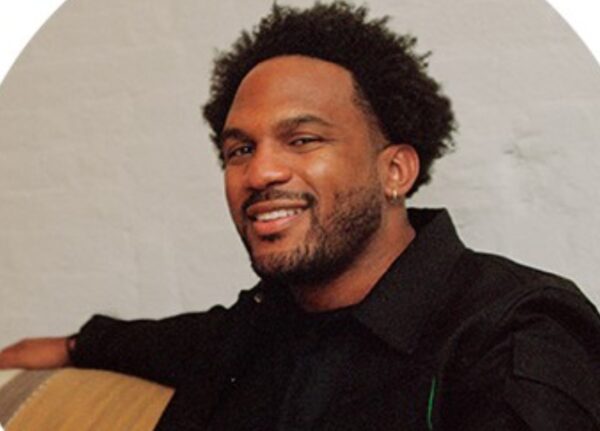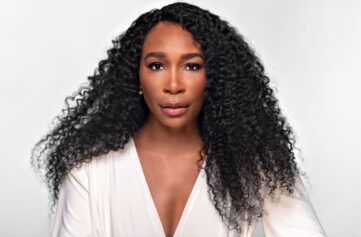By Omose Ighodaro
Kickstarter, the crowd-funding platform, is looking to Everette Taylor, its new chief executive officer, to return the company to its core values.
Kickstarter was founded in 2009 as a public benefit corporation that helps connect creative projects with donors who contribute money to fund the ideas. Headquartered in New York City, the company has facilitated $6.9 billion for over 228,000 projects.

Taylor, who is the company’s first Black CEO, was appointed to the position in September and replaced Aziz Hasan who resigned in March after backlash for layoffs during the pandemic and plans to move the platform to blockchain. Taylor, 33, experienced homelessness in high school and in 2008 dropped out of college to get a job to support his family. He ultimately overcame those challenges to found a company and become chief marketing officer at the online art marketplace Artsy.
His latest challenge includes reconnecting Kickstarter with its users and improving diversity on the platform. Kickstarter acknowledged creators of color are less likely to meet their fundraising goals and raise less money if they do hit them. To address this, the company launched a $500,000 fund in October 2021 with the Skoll Foundation and Creative Capital to back creators from minority backgrounds on the platform. Taylor said he wants to show what crowdfunding can do for multiple communities.
Bloomberg News talked with Taylor about his plans to increase diversity on the platform, reach out to younger people and improve the user experience. The interview has been edited and condensed for clarity.
Are you worried about what inflation or a possible recession will mean for donations from backers? If so, is Kickstarter taking any steps to address it?
Kickstarter has lived through economic crises before and we have seen the desire to create and support new ideas remain extremely resilient during these periods. We’re looking at ways we can support creators to make it easier and cheaper for them to manage shipping and production costs through partnerships with companies like Easyship and expanding our Forward Funds program to support more creators. We should be announcing new funds in that program in the very near future.
How has crowdfunding changed since the pandemic?
Some of the top brands and companies around the world started on Kickstarter. When you look at, Oculus, Peloton, Allbirds — these brands all started from Kickstarter. It gives people an opportunity, especially during a tough macroeconomic environment where venture capital is becoming more difficult to receive.
When the pandemic hit, Kickstarter actually had its best years ever. I think that shows you that during a time where people were unsure, it was actually an opportunity for so many people to explore their ideas, explore their entrepreneurial interests, and they had a platform that could support that.
As the first Black person on Kickstarter’s C-suite team, how do you plan to make the platform more inclusive?
Number one is humanizing the brand. I understand how meaningful it is to have someone like myself in this space. In a space that may not be as diverse as it should be. I understand the responsibility I have to educate communities of color about crowdfunding and the opportunities it can bring. I think it’s unfair people from certain socio-economic backgrounds may have more of an advantage than others and I want to even the playing field as much as possible through the platform.
Secondly, from a business strategy standpoint, that would be looking at our algorithms — is there any bias within our algorithms and how can we display more diverse creators on our platform and on our homepage. Are we shedding light and giving visibility to creators of color? That’s extremely important. Lastly, from a user standpoint, that would mean being able to grow the brand and bring more diverse backers onto the platform. People tend to engage with what’s familiar to them so the more we can create a more diverse user base of backers, it’s only going to help creators on the platform thrive.
How can Kickstarter address those concerns of bias from backers on crowdfunding sites?
You’re already at a larger advantage when you have an audience you’ve already built for yourself. For instance, we have Brandon Sanderson who raised $42 million on Kickstarter for his books. Most people who are raising money for books on Kickstarter can’t raise $42 million. So, that’s inherently what makes crowdfunding not completely democratized because no one comes into this with equal footing.
But here’s the thing, when I worked at Artsy, the majority of our top in demand artists were White men. Now when you go to Artsy, 70% of the top in-demand artists identify as people of color. Close to 50% are women. How did we do that? And how will I do that at Kickstarter? By looking at our content, our algorithms, our platform, how are we supporting people of color and giving them the support on the platform where they have a better chance to be seen and heard. I’m going to look at are our social media and content channels. Are we supporting creators of color? Are we giving them the exposure they deserve?
Our most recent review of creator demographics in 2021 indicated that about 58% of Kickstarter’s individual creators identify as male. The majority of our creators identify as White or European. We have invested in engaging female and non-binary creators across all categories and this will be an ongoing effort.
What is your vision for Kickstarter? Including revenue and profit growth?
To make everyday people want to support the things that they’re passionate about and not just when someone they know is having a crowdfunding campaign or they just happen to catch something on social media, or they happen to see an ad.
From a revenue standpoint, we’ve been profitable for a long time — since our second year. Our most profitable year was last year, but we will look to be more aggressive with spending our cash in the bank. I want to use more of our cash to help grow the company and invest in new technology, innovation and business lines. These efforts are not to maximize profits but to maximize impact and help more creative projects come to life.
More stories like this are available on bloomberg.com.




